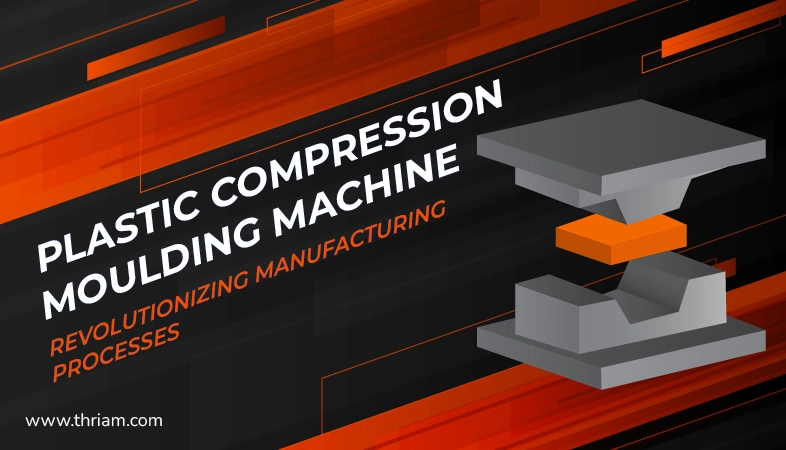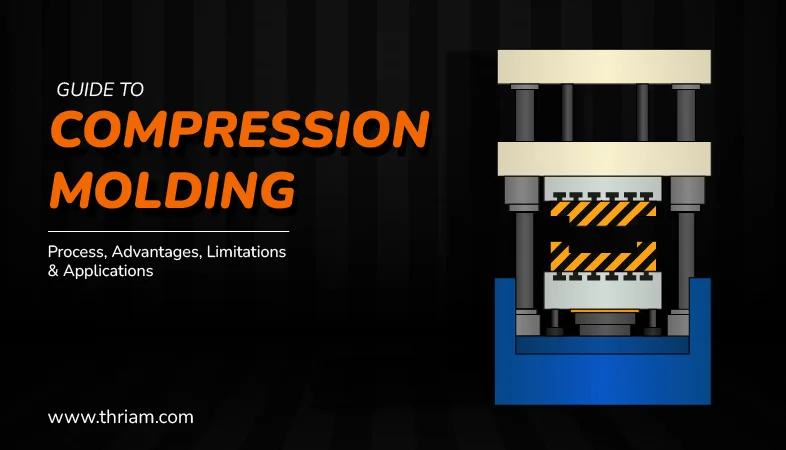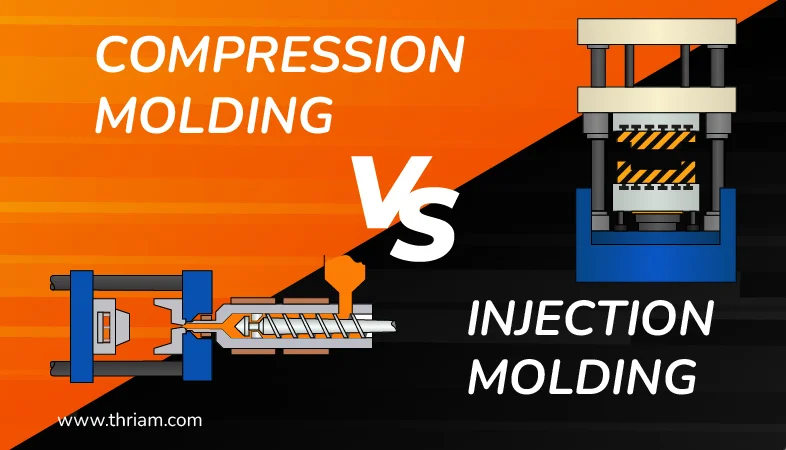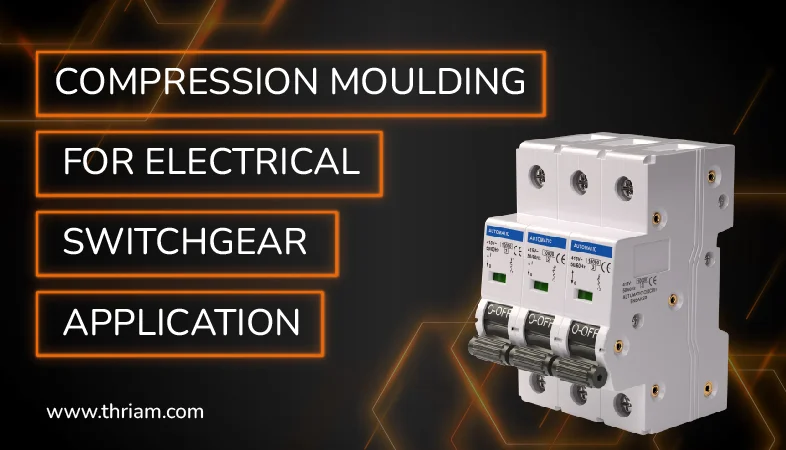Plastic Compression Moulding Machine: Revolutionizing Manufacturing Processes

Plastic compression moulding machines have played a significant role in transforming the manufacturing industry. With their ability to produce high-quality plastic components efficiently, these machines have gained popularity in various sectors such as automotive, electronics, and consumer goods production. In this blog, we will explore the evolution, components, advantages, challenges, and future prospects of plastic compression moulding machines.
Introduction
Plastic compression moulding involves the use of a compression moulding machine to shape and form thermoset plastic materials under high pressure and temperature. These machines have become indispensable in industries where the production of precise and durable plastic components is essential.
History and evolution of plastic compression moulding machines

The history of plastic compression moulding machines can be traced back to the early developments of manual methods. As time progressed, hydraulic systems were introduced, which greatly enhanced the efficiency and precision of the moulding process. Today, with advancements in automation and computer control, plastic compression moulding machines have become highly sophisticated and capable of producing complex parts with ease.
Components and operation of a plastic compression moulding machine
Plastic compression moulding machines are essential in the manufacturing industry, providing cost-effective solutions for producing high-quality plastic components. These machines consist of various key components, each playing a crucial role in the moulding process.
The frame and structure of the machine provide the necessary stability and support. It is essential to ensure the frame and structure are built to withstand the high pressures and forces applied during the thermoset moulding process.
The hydraulic system controls the pressure exerted during the moulding process. It is responsible for generating the force required to compress the plastic material and form it into the desired shape. The hydraulic system comprises pumps, valves, and cylinders, and its proper operation is essential for a successful moulding process.
Heating and temperature control ensure that the plastic material reaches the desired consistency for moulding. The material is heated to a specific temperature to soften or melt it, making it pliable and allowing it to take on the desired shape. At the same time, temperature control systems ensure that the material does not overheat or cool too quickly, affecting its properties and quality.
Finally, the moulding process and cycle dictate the steps and duration required to produce the final product. This involves placing the plastic material into a mould, compressing it at high pressure and high temperature, and then allowing it to cool and solidify. The moulding cycle can include various steps, such as filling, packing, holding, and cooling, depending on the complexity of the mould design and material properties.
Applications and advantages of plastic compression moulding machines
Plastic compression moulding machines have found widespread applications in various industries, revolutionizing the manufacturing processes and enabling the production of high-quality plastic components. Let's explore some of the key sectors that benefit from these machines and the advantages they offer.
- The automotive industry heavily relies on plastic compression moulding machines for the production of high-strength and lightweight components. From bumpers and interior parts to dashboard panels and trim, these machines enable the creation of durable and aesthetically pleasing products. The ability of plastic compression moulding to produce complex shapes with precision makes it an ideal solution for automotive manufacturers.
- The electronics and electrical equipment manufacturing industry also benefits from the precise and intricate shapes that can be achieved with thermoset plastic compression moulding. From small components like connectors and switches to larger parts like housings and enclosures, these machines provide the versatility required to meet the specific needs of this sector. Plastic compression moulding allows for the integration of multiple functions and features in a single component, enhancing efficiency and reducing assembly requirements.
- Plastic compression moulding machines are widely employed in consumer goods production. Whether it's toys, household appliances, or personal care products, these machines facilitate the creation of durable and visually appealing plastic components. The ability to achieve consistent dimensional stability and excellent part reproducibility makes plastic compression moulding an attractive choice for high-volume consumer goods manufacturing.
- Plastic compression moulding offers several advantages over other moulding techniques. Firstly, it allows for excellent part reproducibility, ensuring consistency in the final products. This is especially important for industries that demand precise and repeatable results.
Secondly, plastic compression moulding provides dimensional stability, minimizing the risk of warping or distortion in the finished components.
Another advantage is that plastic compression moulding machines can accommodate a wide range of materials, including thermoplastic polymers, thermosetting plastics, and composites. This flexibility enables manufacturers to utilize specific materials with desired properties for each application.
Furthermore, plastic compression moulding is a cost-effective solution for high-volume production. The efficiency and speed of the process, combined with the ability to produce multiple parts in a single mould, contribute to reduced production costs and increased productivity.
Challenges and considerations in using plastic compression moulding machines
While plastic compression moulding machines offer numerous benefits, several challenges and considerations need to be addressed. Material selection and compatibility play a crucial role in achieving optimal results. It is necessary to choose the appropriate material based on the desired properties of the final product. Designing moulds that accommodate the specific requirements of compression moulding is another important consideration. Moreover, energy efficiency and waste management should be prioritized to minimize environmental impact.
Emerging trends and future prospects
Plastic compression moulding machines continue to evolve, driven by technological advancements and innovations. Manufacturers are investing in research and development to improve machine capabilities, increase efficiency, and enhance product quality. As the demand for sustainable manufacturing grows, advancements in materials and processes are expected.
The market for plastic compression moulding machines is projected to grow significantly in the coming years. The expanding automotive and consumer goods industries, coupled with the adoption of lightweight materials, will fuel the demand for these machines. Moreover, the increasing focus on recyclable and eco-friendly products will drive the development of new moulding techniques and materials.
Conclusion
Plastic compression moulding machines have revolutionized manufacturing processes, offering precise, efficient, and cost-effective solutions for producing plastic components. Their history, components, advantages, challenges, and future prospects highlight their significance in various industries. As technology progresses and demands change, plastic compression moulding machines will continue to be at the forefront of innovation, powering the next generation of manufacturing.



